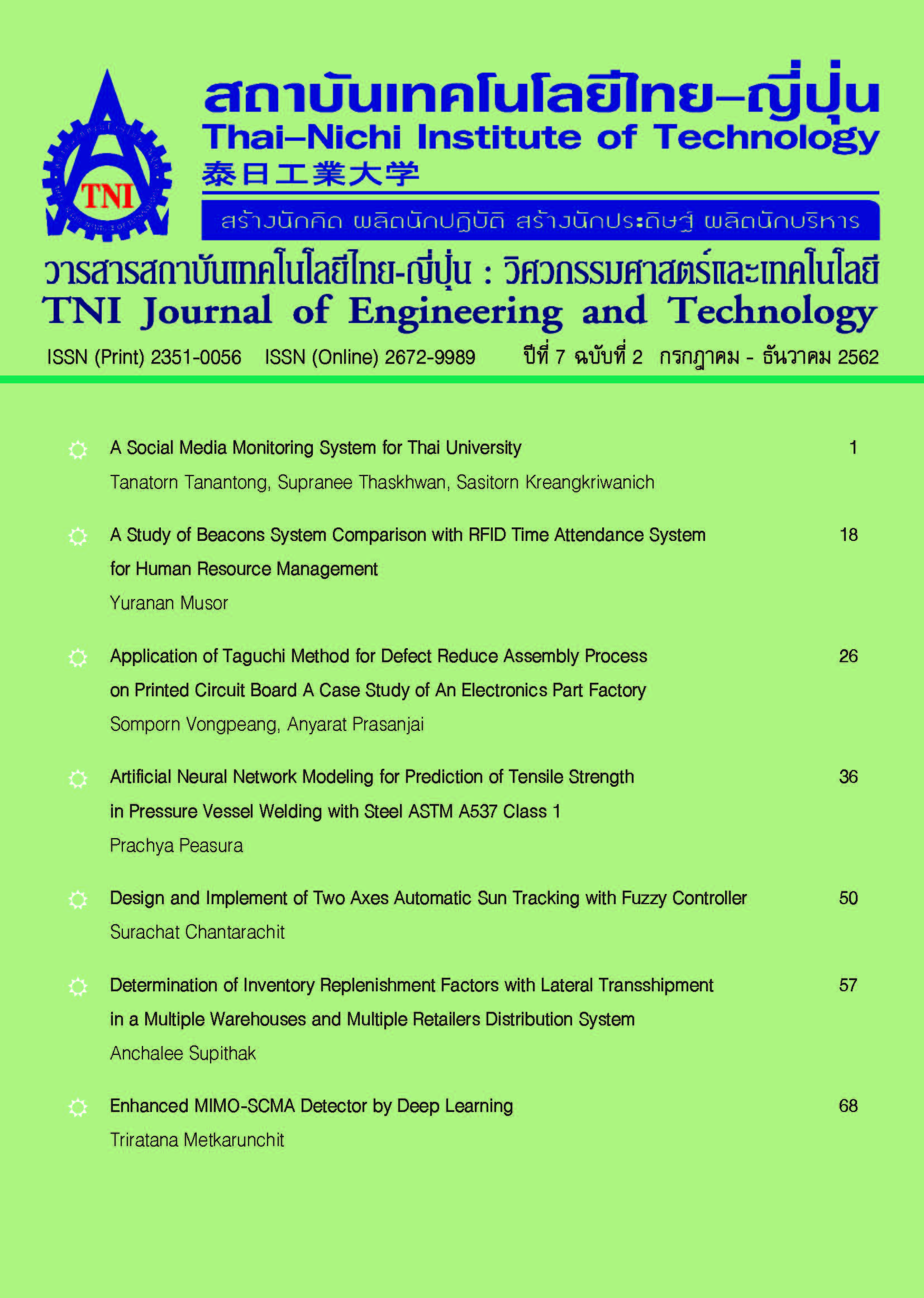Unfolding to the Past: Temporal and Dimensional Perception Enrichment for Image Impression Improvement
Main Article Content
Abstract
An image is in essence a record of visible objects at a particular point in time. This paper proposes a method based on adaptively integrating depth cues with relative motion for enriching temporal and dimensional perception of images. The key idea of our method is to construct a natural-looking animated sequence of images from the original one by introducing differing depth cues and varying time frames to individual generated images. The differing depth cues are created by utilizing variations of visual details and color saturation, whereas the presentation time duration of each image is determined based on structural similarity of consecutive images. The resulting animated image can give a sense of increasing depth as well as a temporal dynamics from past to present. The proposed method can be applied to image impression improvement, especially in the exhibitions or presentations of historical places and artifacts.
Article Details
Article Accepting Policy
The editorial board of Thai-Nichi Institute of Technology is pleased to receive articles from lecturers and experts in the fields of engineering and technology written in Thai or English. The academic work submitted for publication must not be published in any other publication before and must not be under consideration of other journal submissions. Therefore, those interested in participating in the dissemination of work and knowledge can submit their article to the editorial board for further submission to the screening committee to consider publishing in the journal. The articles that can be published include solely research articles. Interested persons can prepare their articles by reviewing recommendations for article authors.
Copyright infringement is solely the responsibility of the author(s) of the article. Articles that have been published must be screened and reviewed for quality from qualified experts approved by the editorial board.
The text that appears within each article published in this research journal is a personal opinion of each author, nothing related to Thai-Nichi Institute of Technology, and other faculty members in the institution in any way. Responsibilities and accuracy for the content of each article are owned by each author. If there is any mistake, each author will be responsible for his/her own article(s).
The editorial board reserves the right not to bring any content, views or comments of articles in the Journal of Thai-Nichi Institute of Technology to publish before receiving permission from the authorized author(s) in writing. The published work is the copyright of the Journal of Thai-Nichi Institute of Technology.
References
[2] Canva. (2019). [Online]. Available: https://www.canva. com/features/photo-effects/
[3] BeFunky. (2019). [Online]. Available: https://www.befun ky.com/features/photo-effects/
[4] L. Wang. “8 mind-bending optical illusions (and what they reveal about how our brains work).” Visual Learning Center by Visme. https://visme.co/blog/best-optical-illusions/ (accessed Sep. 3, 2019).
[5] A. Hosny. “How come a 3D movie on a 2D screen ?!” https://abdelrahmanhosny.wordpress.com/2014/03/12/ how-come-a-3d-movie-on-a-2d-screen/ (accessed Sep. 3, 2019).
[6] C. Jirousek. “Two dimensional illusion of three dimensional form.” Art, Design, and Visual Thinking. http://char.txa.cornell.edu/language/element/form/form illu.htm (accessed Sep. 3, 2019).
[7] J.-I. Jung, J.-H. Lee, I.-Y. Shin, J.-H. Moon, and Y.-S. Ho, “Improved depth perception of single-view images,” ECTI Transactions on Electrical Eng., Electronics, and Communications, Vol. 8, No. 2, pp. 164-172, Aug. 2010.
[8] K. Ruxpaitoon, N. Aoki, and H. Kobayashi, “Studies on perspective expression technique used in wall paintings of each Thai dynasty period,” Journal of the Society of Photographic Science and Technology of Japan, Vol. 76, No.1, pp. 88-98, 2013.
[9] D. Scott. “Chiaroscuro.” https://drawpaintacademy.com/ chiaroscuro/ (accessed Sep. 3, 2019).
[10] J. Qian, J. Li, K. Wang, S. Liu, and Q. Lei, “Evidence for the effect of depth on visual working memory,” Scientific Reports, Jul. 2017.
[11] P. B. Hibbard, A. E. Haines, and R. L. Hornsey, “Magnitude, precision, and realism of depth perception in stereoscopic vision,” Cognitive Research: Principles and Implications, May 2017.
[12] P. Cammack and J. M. Harris, “Depth perception in disparity-defined objects: finding the balance between averaging and segregation,” Philosophical Transactions of the Royal Society B: Biological Sciences, Jun. 2016.
[13] Lars. “4 tips for modern vintage photography.” https://www.eyeem.com/blog/modern-vintage-photo graphy (accessed Sep. 3, 2019).
[14] A. Semmo, M. Reimann, M. Klingbeil, S. Shekhar, M. Trapp, and J. Döllner, “ViVid: Depicting dynamics in stylized live photos,” 2019, doi: 10.1145/3305365.3329726.
[15] Bloggif. (2019). [Online]. Available: https://en.bloggif.com/ effect (accessed Sep. 3, 2019).
[16] F. Q. Wei. “Time in motion by Fong Qi Wei.” Gestalten. https://gestalten.com/blogs/journal/time-in-motion-by-fong-qi-wei (accessed Sep. 3, 2019).
[17] fqwimages. https://fqwimages.tumblr.com/ (accessed Sep. 3, 2019).
[18] fqwimages. “Time paintings.” https://fqwimages.com/ time-paintings/ (accessed Sep. 3, 2019).
[19] The MathWorks, Inc. “Reduce the number of colors in an image.” https://www.mathworks.com/help/images/ reduce-the-number-of-colors-in-an-image.html (accessed Sep. 3, 2019).
[20] R. W. Floyd and L. Steinberg, “An adaptive algorithm for spatial gray scale,” International Symposium Digest of Technical Papers, Society for Information Displays, 1975, pp. 36.
[21] Z. Wang. “Image quality assessment: From error visibility to structural similarity.” https://pdfs.semanticscholar.org/ 66dc/7d32429e5e5906d1026706eb3a716b67bd3b.pdf (accessed Sep. 3, 2019).
[22] I. Mamun. “Image classification using SSIM.” https:// towardsdatascience.com/image-classification-using-ssim-34e549ec6e12 (accessed Sep. 3, 2019).
[23] The MathWorks, Inc. “ssim.” https://www.mathworks. com/help/images/ref/ssim.html (accessed Sep. 3, 2019)


